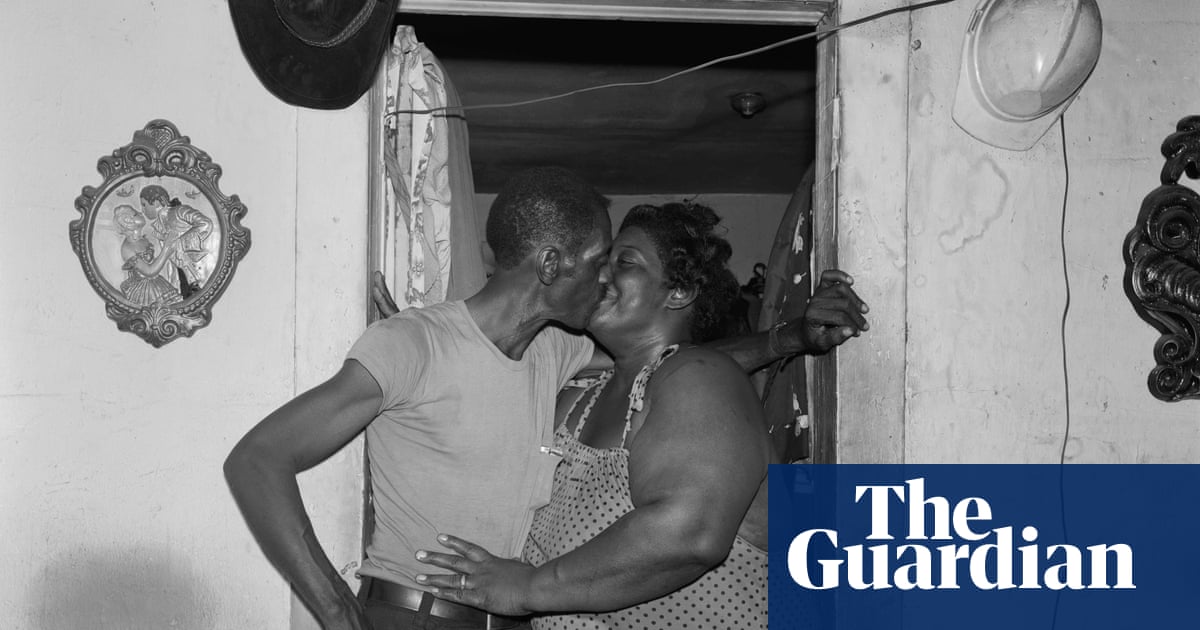When I began my project photographing in the southern states of the US, I’d only recently developed the confidence needed to take effective portraits. Speaking publicly or talking with people used to make me very nervous. But I was mainly photographing architecture – I knew I wanted to change and make people my subject. So I simply forced myself to endure the anxiety. I picked locations where people gathered in public, such as beaches or parks, and would make myself walk up to them and ask for permission to photograph them.
If you do anything long enough, you start to get good at it, and eventually I turned myself into a very assertive photographer. I’m not an intimidating person – I’m small in stature – and generally speaking people like me. On any given day, if I were to ask 20 people to pose for me, 19 would say yes.
I’d moved to Knoxville in 1982 to teach photography at the University of Tennessee, and during the first exploratory trip from my new home I really did not have a specific objective. But when I got back and processed the film, the results confirmed what I’d started to realise as the trip had gone on – that my pictures of Black Americans were the most interesting. Over the course of a number of summer road trips throughout the decade, I continued to visit Black communities across the American south.
During each trip, my first stop after checking into a motel would be the local police station. I would pull out a map of the town, explain that I had some very expensive photographic equipment and ask an officer if he would circle the places I should avoid. I knew those were the places I needed to be.
I would walk around with my heavy, large format 4:5 camera already mounted on its tripod, in search of opportunities. When I sensed the possibility of a photograph, I’d approach the subject and explain that I thought he or she was somehow special, that this person was, as in the theatre, clearly the star, and that what I wanted to photograph was their star quality.
As an Asian man showing up in predominantly Black areas, I was clearly an anomaly, and often people were surprised I didn’t speak Chinese or broken English. Having the camera on a tripod allowed me to avoid a certain predicament that would occur with a handheld camera that you would hold in front of your face. In that instance, the subject feels as if they are undergoing a medical exam. They’re being looked at, objectified, and the photographer has all the control, whereas the ability to stand beside the camera levels the playing field. It allowed me to have a direct conversation, and invite the subject to be a participant.
Posing the subject was when the process became very interesting. The person I was asking to photograph was not a professional actor, nor was I a director. Whatever I asked them to do, they would interpret individually and do something different, often displaying themselves in a surprising and revealing way. That’s what I wanted – to make a photograph of something that was a mutual discovery.
This particular picture was taken either in Augusta or Valdosta, Georgia. I saw the woman in her yard, began a conversation and took several pictures of her outside, then asked if she would mind if I also photographed her inside. She invited me into her house and her husband was there. I asked them to stand next to each other in that doorway, then I asked them to kiss.
I made a series of them together and this one turned out to be, I think, the best. I wanted a dialogue between the couple and the plaque you can see on the wall beside them, which is a relief carving of a man and a woman in a similar pose. I didn’t ask about the hats – that wasn’t the kind of questioning I engaged in. I just included objects that might allow the viewer to imagine possible scenarios.
At the end of the process I would write down my subjects’ addresses and send them a print. Sometimes I saw participants again on later trips, and they would show me where they’d put my picture up in their homes. On one occasion a woman tore the photograph to pieces in front of me. The majority of times, though, they were very pleased with the results.
Born:Brooklyn, New York, 1951.Trained:“With Minor White at MIT and Walker Evans at Yale.”Influences: “Minor WhiteandWalker Evans”.High point: “Having been plucked from obscurity.”Low point:“I thought I was retired but instead have been busier than ever!”Top tip: “Teach yourself to have courage.”
Baldwin Lee’s photographs are on display at theDavid Hill Gallery stand, Photo London,15-18 May.
